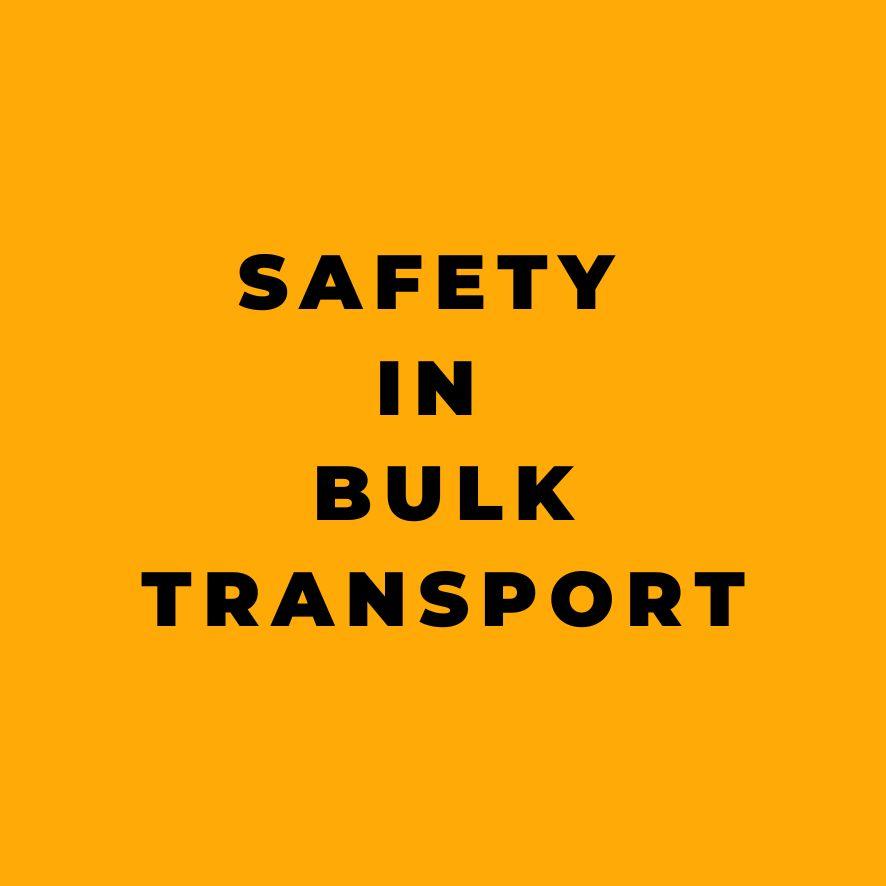Safety in bulk transport is a critical aspect of the logistics and transportation industry. Whether it involves shipping bulk liquids, solid bulk cargoes, or non-packed commodities, ensuring the safety and integrity of the transport process is of paramount importance. This comprehensive article aims to delve into the various aspects of safety in bulk transport, covering key concepts, regulations, best practices, and the role of technology in maintaining safety standards. By understanding the intricacies of bulk transport safety, stakeholders can effectively mitigate risks, ensure compliance with regulations, and uphold the quality and integrity of the transported goods.
Understanding Bulk Transport
Bulk transport refers to the movement of large quantities of commodities, such as liquids or solid materials, in specialized containers or vessels. These commodities can include chemicals, grains, coal, iron ore, petroleum products, and a wide range of other non-packed goods. The transportation of bulk cargo is a complex process that requires careful planning, adherence to safety regulations, and the use of specialized equipment to ensure the safe and efficient movement of goods.
Key Considerations for Bulk Transport Safety
1. Compliance with Regulations: Bulk transport operations are subject to a range of regulations and codes aimed at ensuring the safety of the transport process, protecting the environment, and safeguarding the well-being of personnel involved in the operations. For example, the International Maritime Solid Bulk Cargoes Code (IMSBC Code) sets out guidelines for the safe handling and transport of solid bulk cargoes by sea, addressing aspects such as stability, hatch cover integrity, and cargo loading procedures.
2. Cargo-Specific Safety Measures: Different types of bulk cargo require specific safety considerations. For instance, the transportation of bulk liquids, such as chemicals, oils, and beverages, demands adherence to stringent safety protocols to prevent leaks, spills, and contamination. Specialized containers, such as Flexitanks, are used to ensure the safe transport of liquids, with a focus on leak prevention and product integrity.
3. Loading and Unloading Safety: The loading and unloading of bulk cargo present inherent safety risks, requiring strict adherence to safety protocols and procedures. Containment measures, spill response plans, and personnel training in hazardous material handling are essential to mitigate risks during these critical operations.
4. Equipment and Infrastructure Safety: The safety of bulk transport also hinges on the reliability and integrity of equipment, such as tanks, containers, and loading/unloading facilities. Regular inspections, maintenance, and adherence to safety standards for equipment and infrastructure are crucial to preventing accidents and ensuring the safe handling of bulk cargo.
Safety in Bulk Carrier Operations
Bulk carriers, which were developed in the 1950s to transport non-packed commodities, present unique safety concerns due to their large-scale operations and the nature of the cargoes they carry. The stability of bulk carriers, securing watertight hatch covers, and compliance with the IMSBC Code are paramount for ensuring the safety of these vessels and their cargo. Additionally, the proper training of crew members and adherence to safety guidelines for cargo loading contribute to the overall safety of bulk carrier operations.
Role of Technology in Bulk Transport Safety
Advancements in technology have significantly contributed to enhancing safety in bulk transport. For example, the use of advanced monitoring systems, such as telematics and IoT (Internet of Things) devices, allows for real-time tracking of cargo conditions, temperature monitoring for perishable goods, and early detection of potential safety hazards. Additionally, automated safety systems, such as leak detection sensors and emergency shutdown mechanisms, offer proactive measures to prevent accidents and ensure the safety of bulk transport operations.
Best Practices and Safety Tips for Bulk Transport
1. Comprehensive Training: All personnel involved in bulk transport operations, including drivers, loading/unloading personnel, and crew members on vessels, should undergo rigorous training in hazardous material handling, safety protocols, and emergency response procedures.
2. Regular Inspections and Maintenance: Routine inspections and maintenance of transport equipment, containers, and vessels are essential to identify and address potential safety issues before they escalate into hazards.
3. Contingency Planning: Developing robust contingency plans for spill response, emergency evacuations, and communication protocols in the event of accidents or safety incidents is crucial for mitigating risks in bulk transport operations.
4. Compliance with Industry Standards: Adhering to industry-specific standards, regulations, and codes, such as the IMSBC Code for solid bulk cargoes and hazmat transportation guidelines, is fundamental to maintaining safety in bulk transport.
Conclusion
Safety in bulk transport is a multifaceted endeavor that encompasses compliance with regulations, cargo-specific safety measures, loading/unloading protocols, equipment and infrastructure safety, and the integration of technology for enhanced safety monitoring. By prioritizing safety in bulk transport operations, stakeholders can uphold the integrity of transported goods, protect the environment, and safeguard the well-being of personnel involved in the logistics chain. As the industry continues to evolve, a proactive approach to safety, coupled with ongoing training and technological advancements, will be instrumental in ensuring the continued safe and efficient transport of bulk commodities across the globe.










